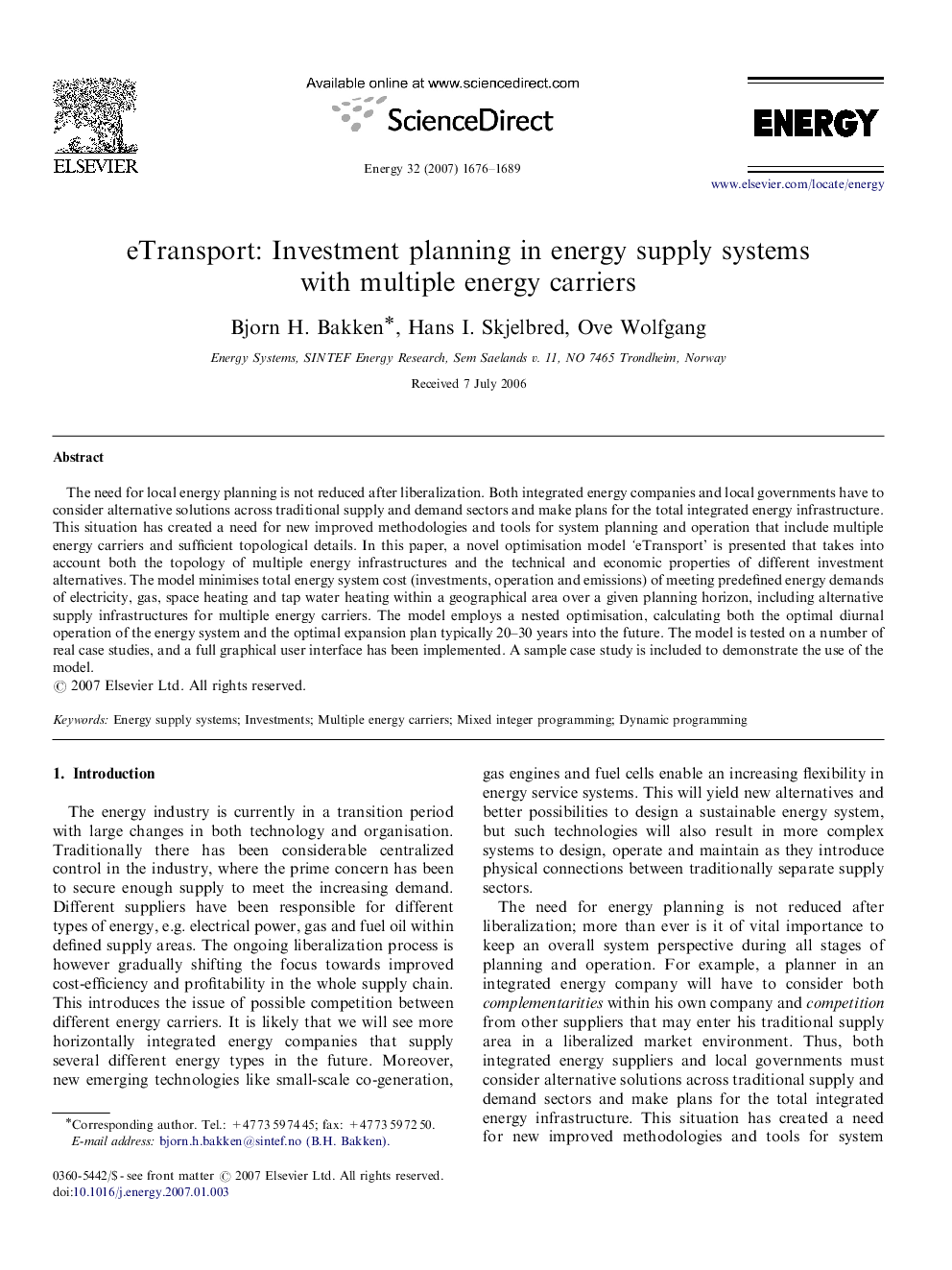| Article ID | Journal | Published Year | Pages | File Type |
|---|---|---|---|---|
| 1736354 | Energy | 2007 | 14 Pages |
The need for local energy planning is not reduced after liberalization. Both integrated energy companies and local governments have to consider alternative solutions across traditional supply and demand sectors and make plans for the total integrated energy infrastructure. This situation has created a need for new improved methodologies and tools for system planning and operation that include multiple energy carriers and sufficient topological details. In this paper, a novel optimisation model ‘eTransport’ is presented that takes into account both the topology of multiple energy infrastructures and the technical and economic properties of different investment alternatives. The model minimises total energy system cost (investments, operation and emissions) of meeting predefined energy demands of electricity, gas, space heating and tap water heating within a geographical area over a given planning horizon, including alternative supply infrastructures for multiple energy carriers. The model employs a nested optimisation, calculating both the optimal diurnal operation of the energy system and the optimal expansion plan typically 20–30 years into the future. The model is tested on a number of real case studies, and a full graphical user interface has been implemented. A sample case study is included to demonstrate the use of the model.
